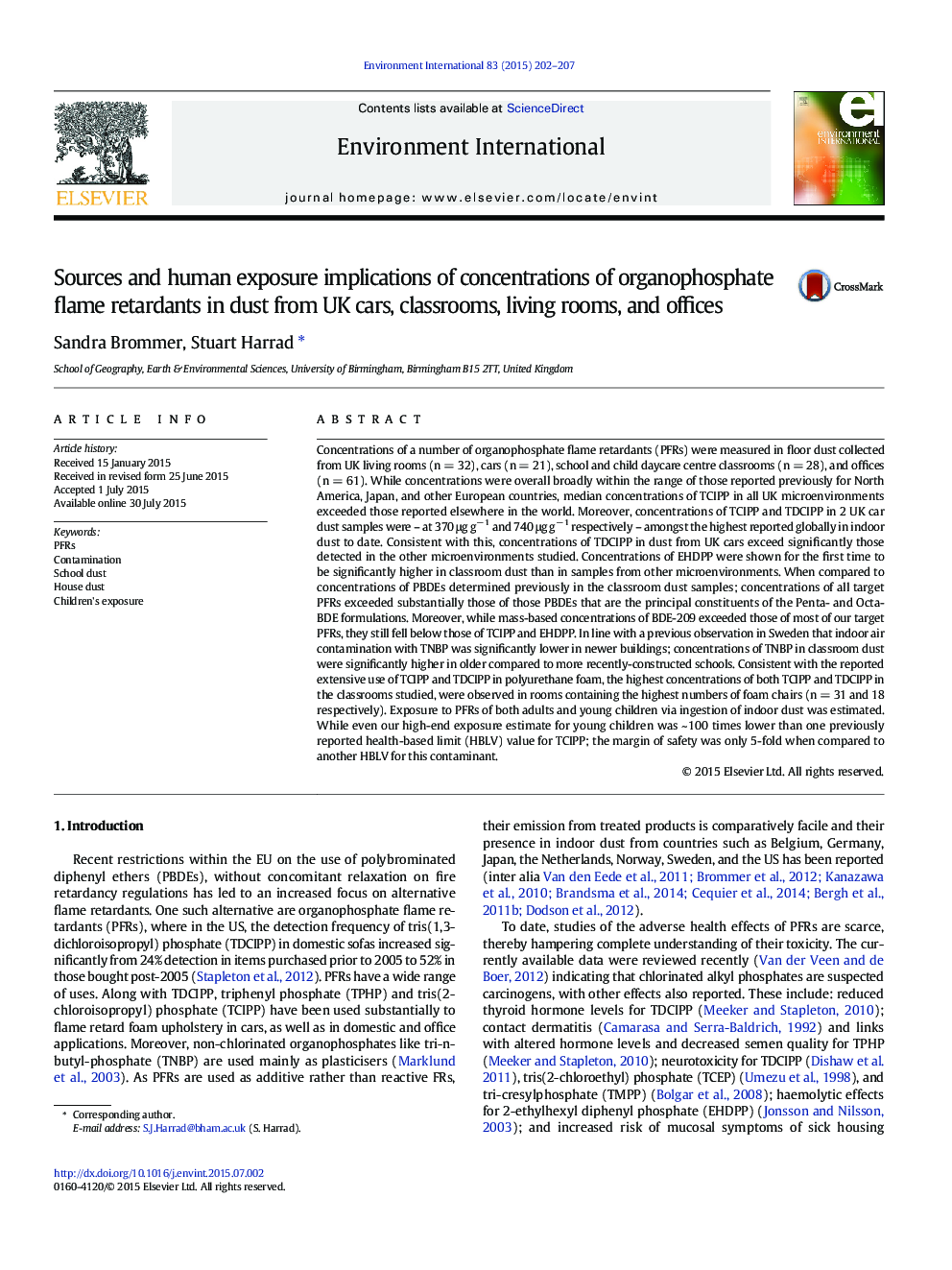| کد مقاله | کد نشریه | سال انتشار | مقاله انگلیسی | نسخه تمام متن |
|---|---|---|---|---|
| 6313282 | 1619045 | 2015 | 6 صفحه PDF | دانلود رایگان |
- We measured PFRs in dust from UK cars, school classrooms, homes, and offices.
- Levels of TCIPP and TDCIPP in 2 samples were amongst the highest reported globally.
- TDCIPP concentrations in cars exceeded significantly those in other microenvironments.
- Levels of EHDPP in classrooms exceeded significantly those in other microenvironments.
- Safety margin between one HBLV and high-end exposure to TCIPP of toddlers was 5-fold.
Concentrations of a number of organophosphate flame retardants (PFRs) were measured in floor dust collected from UK living rooms (n = 32), cars (n = 21), school and child daycare centre classrooms (n = 28), and offices (n = 61). While concentrations were overall broadly within the range of those reported previously for North America, Japan, and other European countries, median concentrations of TCIPP in all UK microenvironments exceeded those reported elsewhere in the world. Moreover, concentrations of TCIPP and TDCIPP in 2 UK car dust samples were - at 370 μg gâ 1 and 740 μg gâ 1 respectively - amongst the highest reported globally in indoor dust to date. Consistent with this, concentrations of TDCIPP in dust from UK cars exceed significantly those detected in the other microenvironments studied. Concentrations of EHDPP were shown for the first time to be significantly higher in classroom dust than in samples from other microenvironments. When compared to concentrations of PBDEs determined previously in the classroom dust samples; concentrations of all target PFRs exceeded substantially those of those PBDEs that are the principal constituents of the Penta- and Octa-BDE formulations. Moreover, while mass-based concentrations of BDE-209 exceeded those of most of our target PFRs, they still fell below those of TCIPP and EHDPP. In line with a previous observation in Sweden that indoor air contamination with TNBP was significantly lower in newer buildings; concentrations of TNBP in classroom dust were significantly higher in older compared to more recently-constructed schools. Consistent with the reported extensive use of TCIPP and TDCIPP in polyurethane foam, the highest concentrations of both TCIPP and TDCIPP in the classrooms studied, were observed in rooms containing the highest numbers of foam chairs (n = 31 and 18 respectively). Exposure to PFRs of both adults and young children via ingestion of indoor dust was estimated. While even our high-end exposure estimate for young children was ~ 100 times lower than one previously reported health-based limit (HBLV) value for TCIPP; the margin of safety was only 5-fold when compared to another HBLV for this contaminant.
Journal: Environment International - Volume 83, October 2015, Pages 202-207
